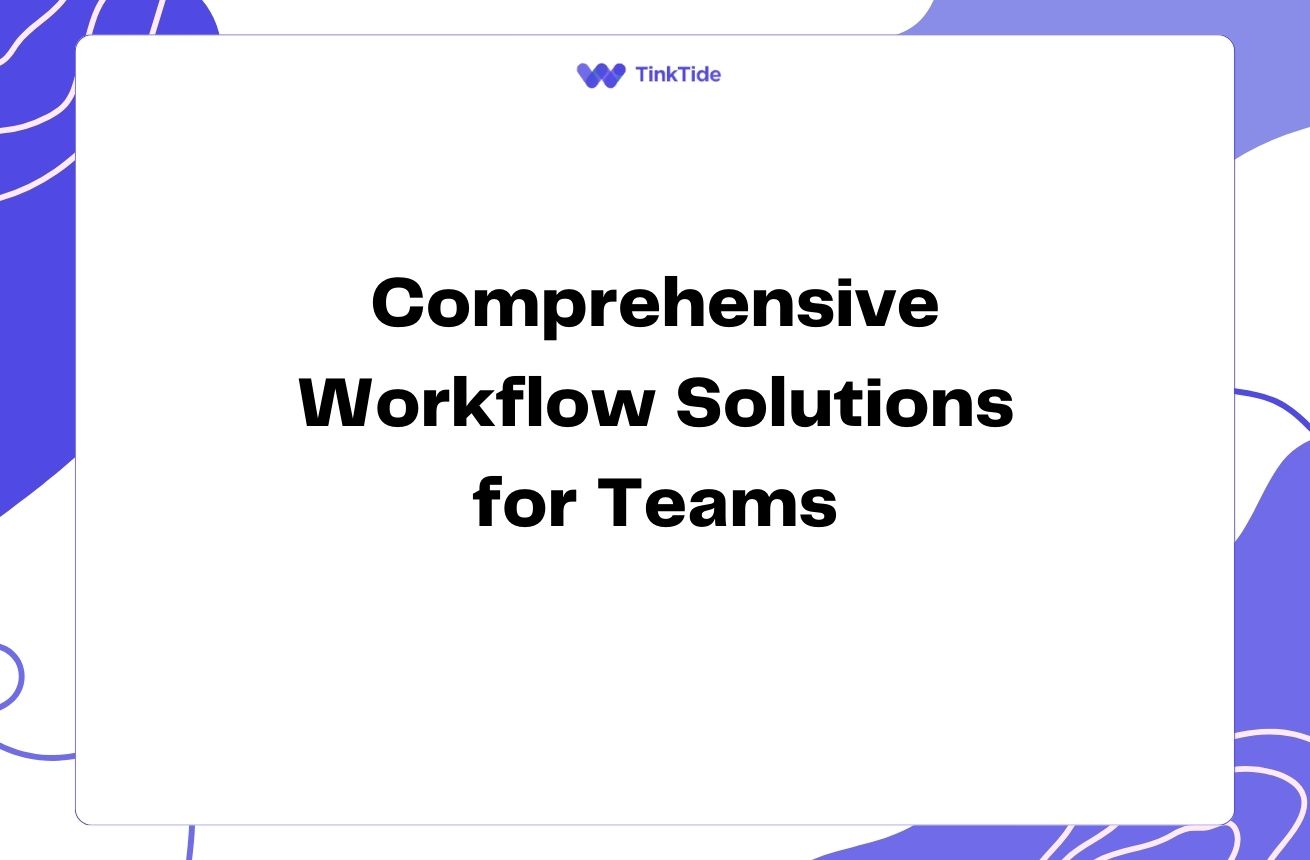Boost Your Email Marketing with Mind Maps: A Comprehensive Guide
The Power of Mind Maps in Email Marketing
Email marketing remains a cornerstone of digital marketing strategies, but organizing effective campaigns can be challenging. Enter mind maps – powerful visual tools that can revolutionize your approach to email marketing. By using mind maps, you can streamline your planning process, boost creativity, and ensure all elements of your campaign are cohesive and impactful.
Mind maps allow you to visually represent ideas and connections, making it easier to see the big picture of your email marketing campaign. This bird's-eye view helps you identify gaps, opportunities, and potential issues before they arise. With tools like MindMeister or XMind, you can create digital mind maps that are easy to share and collaborate on with your team.
By incorporating mind maps into your email marketing workflow, you'll find that campaign planning becomes more intuitive and efficient. Let's explore how to leverage this powerful technique to elevate your email marketing game.
Getting Started: Creating Your Email Marketing Mind Map
To begin, start with a central idea or goal for your email marketing campaign. From there, branch out into main categories that will form the backbone of your strategy. Here's a basic structure to get you started:
- Campaign Objective
- Target Audience
- Content Ideas
- Design Elements
- Timeline
- Metrics and KPIs
Defining Your Campaign Objective
Every successful email marketing campaign starts with a clear objective. Use your mind map to brainstorm and refine your goals. Are you looking to increase sales, boost engagement, or nurture leads? By visually mapping out your objectives, you can ensure that every element of your campaign aligns with your primary goal.
For example, if your objective is to increase sales of a new product, your mind map might include branches for product features, promotional offers, and customer pain points that the product addresses. This visual representation helps you maintain focus and consistency throughout your campaign.
Remember to keep your objectives SMART (Specific, Measurable, Achievable, Relevant, and Time-bound). Your mind map can help you break down each aspect of your SMART goal, ensuring you've considered all angles.
Understanding Your Target Audience
A crucial aspect of any email marketing campaign is knowing your audience. Use your mind map to create detailed personas of your target recipients. Include branches for demographics, psychographics, pain points, and preferences.
By visualizing your audience segments, you can easily identify commonalities and differences, which will inform your content creation and personalization strategies. For instance, you might create separate branches for different age groups or job roles, helping you tailor your messaging more effectively.
Don't forget to include information about your audience's email habits. When do they typically check their emails? What types of subject lines resonate with them? Your mind map can help you organize this valuable data for quick reference during campaign creation.
Brainstorming Content Ideas
Content is king in email marketing, and mind maps are excellent tools for content brainstorming. Create branches for different content types such as blog posts, product updates, customer stories, and promotional offers. Then, expand each branch with specific ideas.
For example, under a 'Blog Posts' branch, you might list potential topics that align with your campaign objective. This visual representation can help you see how different content pieces can work together to create a cohesive narrative throughout your email series.
Use your mind map to plan content for different stages of the customer journey. This approach ensures you're providing value at every touchpoint, from awareness to conversion and beyond. Tools like Canva can help you create visually appealing content once you've mapped out your ideas.
Designing Your Email Campaign
Design plays a crucial role in the success of your email marketing campaigns. Use your mind map to plan visual elements, layout, and branding consistency. Create branches for color schemes, typography, imagery, and call-to-action (CTA) buttons.
By visualizing these elements, you can ensure a cohesive look and feel across your entire campaign. Your mind map can also help you experiment with different design ideas before committing to a final layout. Consider using tools like Adobe Photoshop or Sketch for more detailed design work.
Don't forget to include mobile responsiveness in your design planning. With more than half of all emails being opened on mobile devices, it's crucial to ensure your designs look great on smaller screens. Your mind map can help you track different design versions for desktop and mobile.
Creating a Campaign Timeline
Timing is everything in email marketing. Use your mind map to create a detailed timeline for your campaign. Start with key dates such as campaign launch, major promotional periods, and follow-up emails.
Break down each phase of your campaign into smaller tasks, assigning deadlines and team members responsible. This visual representation of your timeline helps ensure nothing falls through the cracks and allows for easy adjustments if needed.
Consider using tools like Trello or Asana to turn your mind-mapped timeline into actionable tasks for your team. This seamless transition from planning to execution can significantly improve your campaign's efficiency.
Tracking Metrics and KPIs
To measure the success of your email marketing campaign, you need to track relevant metrics and Key Performance Indicators (KPIs). Use your mind map to outline the specific metrics you'll monitor, such as open rates, click-through rates, conversion rates, and ROI.
Create branches for each metric, including target values and methods for tracking. This visual representation helps you stay focused on your goals and quickly identify areas that need improvement during the campaign.
Don't forget to include a plan for analyzing and acting on the data you collect. Your mind map can outline steps for regular performance reviews and potential optimization strategies based on different scenarios. Tools like Google Analytics can help you gather and interpret this valuable data.
Implementing Your Mind-Mapped Campaign
With your comprehensive mind map in place, it's time to bring your email marketing campaign to life. Use your visual plan as a reference throughout the implementation process, ensuring all elements align with your original strategy.
Remember that your mind map is a living document. As you implement your campaign, don't hesitate to update and refine your map based on new insights or changing circumstances. This flexibility is one of the key advantages of using mind maps for campaign planning.
Regularly refer back to your mind map during team meetings and progress checks. It serves as an excellent tool for keeping everyone aligned and focused on the campaign's objectives and timeline.
Address common questions
Here are some frequently asked questions about using mind maps for email marketing campaigns:
How do mind maps improve email marketing campaigns?
Mind maps enhance email marketing campaigns by providing a visual overview of the entire strategy. They help in organizing ideas, identifying connections between different elements, and ensuring all aspects of the campaign are cohesive. This visual approach makes it easier to spot gaps, opportunities, and potential issues before they arise, leading to more effective and well-rounded campaigns.
What software is best for creating mind maps for email marketing?
There are several excellent options for creating mind maps. Some popular choices include MindMeister, XMind, and Coggle. These tools offer user-friendly interfaces, collaboration features, and the ability to export your maps in various formats. Choose a tool that fits your team's needs and integrates well with your existing workflow.
How often should I update my email marketing mind map?
Your email marketing mind map should be a living document that evolves with your campaign. It's a good practice to review and update your mind map at least once a week during active campaigns. Additionally, make updates whenever there are significant changes to your strategy, new insights from data analysis, or shifts in campaign goals.
Can mind maps help with email personalization strategies?
Absolutely! Mind maps are excellent for planning personalization strategies. You can create branches for different audience segments, mapping out their characteristics, preferences, and behaviors. This visual representation makes it easier to develop targeted content and design elements for each segment, enhancing your email personalization efforts.
How can I use mind maps to improve email campaign performance?
Mind maps can significantly improve campaign performance by helping you visualize the entire campaign ecosystem. Use them to map out A/B testing strategies, track performance metrics, and brainstorm optimization ideas. By seeing all these elements in one place, you can quickly identify areas for improvement and make data-driven decisions to enhance your campaign's effectiveness.
Are mind maps suitable for large-scale email marketing campaigns?
Yes, mind maps are particularly useful for large-scale campaigns. They help manage complexity by breaking down big campaigns into manageable components. For extensive campaigns, you might create a main overview map with sub-maps for each major component (e.g., content, design, timeline). This approach helps maintain organization and clarity even in complex, multi-faceted campaigns.
Provide additional resources
Mind Mapping for Marketers
A comprehensive guide on how marketers can leverage mind mapping techniques.
Email Marketing Best Practices
Mailchimp's extensive resource on email marketing strategies and tips.
The Psychology of Email Marketing
HubSpot's insights into the psychological aspects of effective email campaigns.
Data-Driven Email Marketing
Campaign Monitor's guide on using data to improve your email marketing efforts.
Email Design Inspiration
A curated collection of great email designs to inspire your campaigns.
Advanced Email Marketing Course
A Coursera course offering in-depth knowledge on email marketing strategies and techniques.
Summarize key takeaways
Mind mapping is a powerful tool for designing and organizing effective email marketing campaigns. By visually representing your campaign strategy, you can ensure all elements work together cohesively, from defining objectives to tracking performance metrics.
Remember, the key benefits of using mind maps for email marketing include improved organization, enhanced creativity, better team collaboration, and the ability to see the big picture at a glance. These advantages can lead to more targeted, effective campaigns that resonate with your audience and achieve your marketing goals.
Start incorporating mind maps into your email marketing workflow today. Experiment with different structures and tools to find what works best for your team. With practice, you'll find that mind mapping becomes an indispensable part of your email marketing strategy, leading to more successful campaigns and better results.
Elevate Your Email Marketing with Mind Mapping
Ready to transform your email campaigns? Try our mind mapping tools for free and see the difference in your marketing strategy.
Start Your Free Trial

